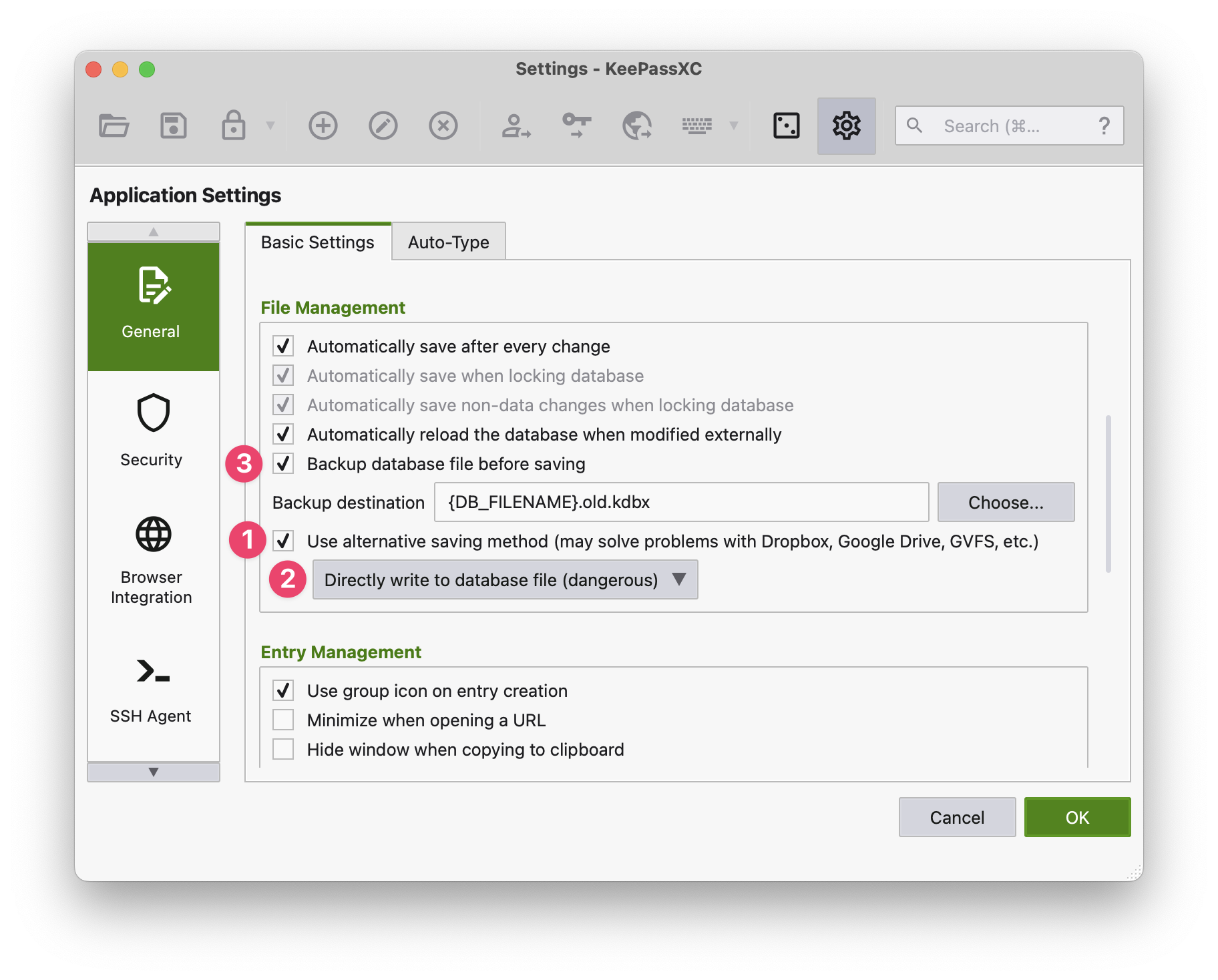Appearance
If KeePassium shows "File doesn't exist"
This can happen for two reasons:
- The file was actually deleted, moved or renamed. This is usually a one-time, spontaneous error.
- The database was edited by KeePass or KeePassXC. This error repeats regularly.
One-time error
As a quick solution, re-add the database to KeePassium again:
- Go to Databases screen (tap < Back if necessary)
- Tap
→ Open Database
- Navigate to your database and select it again.
If your database was deleted or you cannot find it, try to restore it from in-app backup.
Repeating error
If the error repeats every time when you edit the database in KeePass or KeePassXC, the cause and solution are different.
Cause
This happens because by default desktop apps use a multi-step saving process.
That is, they save the modified database into a temporary file, then delete the original database, then rename the temporary file as the original. To a human observer, it looks as if the database was simply updated. For the system, however, this is a new file that just happens to have the same name as the old one.
Some clouds (such as iCloud Drive, pCloud and Nextcloud) refer to files by their internal identifier, rather than file name. The renamed temporary file has a new identifier, whereas KeePassium's link still points to the old database — the one that was deleted.
KeePassium's link still points to the original database, which has been deleted.
Solution for KeePass
The solution is to change KeePass settings as follows:
- Open menu Tools → Options → Advanced
- Select File Input/Output Connections
- Use file transactions for writing databases → turn it off
Solution for KeePassXC
The solution is to change KeePassXC settings as follows:

- Application Settings → General → Basic Settings → File Management
- KeePassXC 2.7.0 and later:
- Use alternative saving method → turn it on
- Set it to Directly write to database file (dangerous)
- KeePassXC 2.6.6 and earlier:
- Safely save database files → turn it off
- Backup database file before saving → turn it on
- This addresses the "unsafe" effect of direct saving: if your computer crashes while writing the database, you would still have a good copy available.

